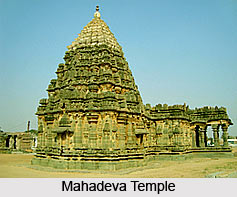 Temples of Koppal district, reflecting the typical south Indian pattern of architecture are some of the excellent tourist spots in Karnataka. Koppal district was formed after the division of Raichur district and is the best seed production center in the state. Places of interest in the district are Anegundi, Navabrindavana, Kanakagiri, and Kuknur.
Temples of Koppal district, reflecting the typical south Indian pattern of architecture are some of the excellent tourist spots in Karnataka. Koppal district was formed after the division of Raichur district and is the best seed production center in the state. Places of interest in the district are Anegundi, Navabrindavana, Kanakagiri, and Kuknur.
Other than the temples of Koppal district, the places of tourist interest include Anegundi and Navabrindavana. The hillock of Gavimath has a temple and offers an excellent view of the surrounding landscape. Two Ashoka edicts are found here precursors a lot of historical importance and hence is a favorite ground for historians and research scholars. Kanakagiri, Kuknur and Hampi are some of the interesting excursions outside the town of religious domain.
Maadanoor Temple, one of the temples of Koppal district houses two bronze idols of Brahmayaksh and Padmavati of the 13th and 16th centuries. At the temple, one can also witness two bronze idols of Mulnayak Bhagvan Shantinath and Bhagvan Ajitnath. The temple with its tranquil and peaceful atmosphere attracts pilgrims from far and near. The temples of Koppal district have earned great popularity since their construction.





















